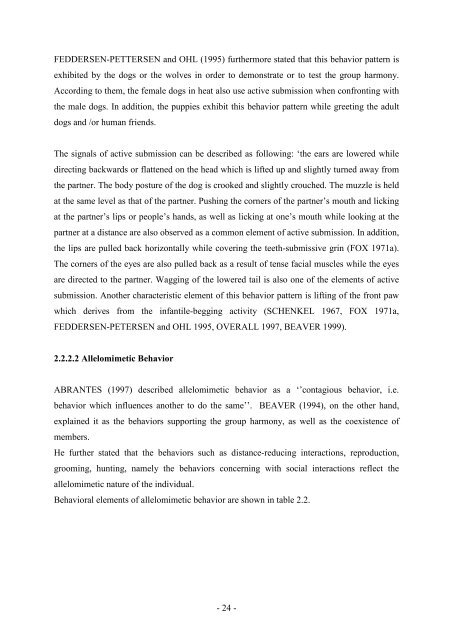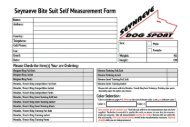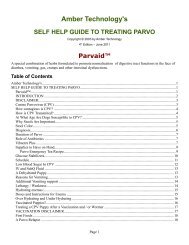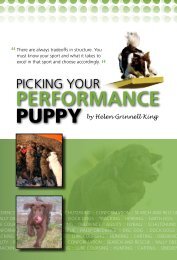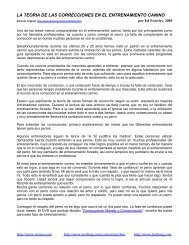Comparison of Stress and Learning Effects of Three Different ...
Comparison of Stress and Learning Effects of Three Different ...
Comparison of Stress and Learning Effects of Three Different ...
You also want an ePaper? Increase the reach of your titles
YUMPU automatically turns print PDFs into web optimized ePapers that Google loves.
FEDDERSEN-PETTERSEN <strong>and</strong> OHL (1995) furthermore stated that this behavior pattern is<br />
exhibited by the dogs or the wolves in order to demonstrate or to test the group harmony.<br />
According to them, the female dogs in heat also use active submission when confronting with<br />
the male dogs. In addition, the puppies exhibit this behavior pattern while greeting the adult<br />
dogs <strong>and</strong> /or human friends.<br />
The signals <strong>of</strong> active submission can be described as following: ‘the ears are lowered while<br />
directing backwards or flattened on the head which is lifted up <strong>and</strong> slightly turned away from<br />
the partner. The body posture <strong>of</strong> the dog is crooked <strong>and</strong> slightly crouched. The muzzle is held<br />
at the same level as that <strong>of</strong> the partner. Pushing the corners <strong>of</strong> the partner’s mouth <strong>and</strong> licking<br />
at the partner’s lips or people’s h<strong>and</strong>s, as well as licking at one’s mouth while looking at the<br />
partner at a distance are also observed as a common element <strong>of</strong> active submission. In addition,<br />
the lips are pulled back horizontally while covering the teeth-submissive grin (FOX 1971a).<br />
The corners <strong>of</strong> the eyes are also pulled back as a result <strong>of</strong> tense facial muscles while the eyes<br />
are directed to the partner. Wagging <strong>of</strong> the lowered tail is also one <strong>of</strong> the elements <strong>of</strong> active<br />
submission. Another characteristic element <strong>of</strong> this behavior pattern is lifting <strong>of</strong> the front paw<br />
which derives from the infantile-begging activity (SCHENKEL 1967, FOX 1971a,<br />
FEDDERSEN-PETERSEN <strong>and</strong> OHL 1995, OVERALL 1997, BEAVER 1999).<br />
2.2.2.2 Allelomimetic Behavior<br />
ABRANTES (1997) described allelomimetic behavior as a ‘’contagious behavior, i.e.<br />
behavior which influences another to do the same’’. BEAVER (1994), on the other h<strong>and</strong>,<br />
explained it as the behaviors supporting the group harmony, as well as the coexistence <strong>of</strong><br />
members.<br />
He further stated that the behaviors such as distance-reducing interactions, reproduction,<br />
grooming, hunting, namely the behaviors concerning with social interactions reflect the<br />
allelomimetic nature <strong>of</strong> the individual.<br />
Behavioral elements <strong>of</strong> allelomimetic behavior are shown in table 2.2.<br />
- 24 -


